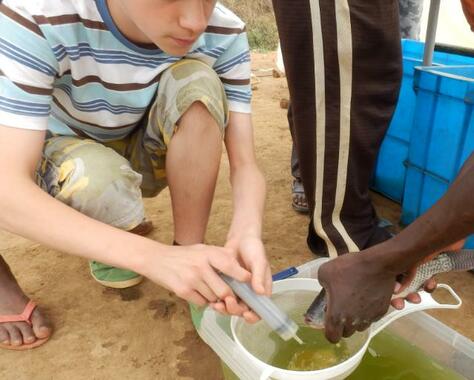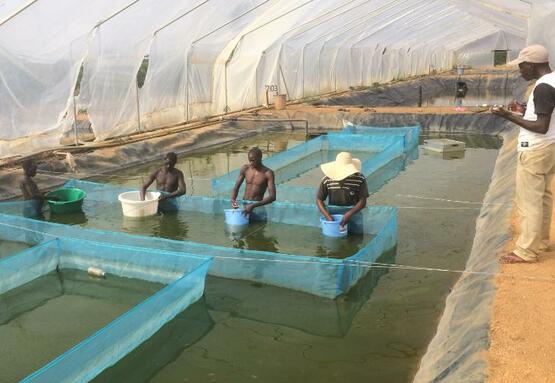Routine ActivitiesOur routine activities revolve around combining specific male and female for a few days, then harvesting their eggs and returning those parent fish to their resting ponds. It's labor-intensive, but that's okay because we are set up for that.
Oreochromis are maternal mouthbrooders. That means that after the eggs have been externally fertilized on the bottom of the pond, the female picks them up in her mouth and holds them there for a week or more until they hatch. We commercialize that process by "robbing" the eggs from the females after a day or two and incubating them in the fish hatchery and then growing out in the fish nursery to 1g for sale or stocking. On-Farm Feed Making
|
Research ActivitiesA big challenge to tilapia farming is maintaining genetic vigour over successive generations. Uncontrolled breeding environments result in poorly performing fingerlings. We have an ongoing research initiative to counter this tendancy.
Other challenges include keeping feed costs down. It can be difficult to predict how the economics of quality verses price play out with a particular brand of feed. We run controlled feeding trials to give us the data necessary to make an informed feed purchasing decision. We operate a demonstration RAS (Recirculation Aquaculture System) here at Lakeside which we offer to investors as a turnkey system. |



